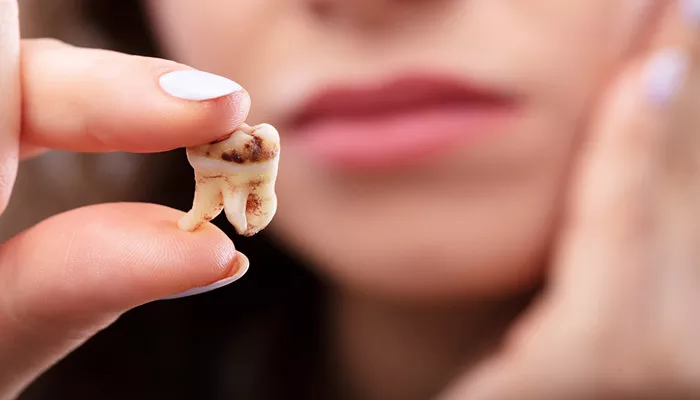Tooth decay is a prevalent dental issue that affects individuals of all ages. It occurs when the hard surface of a tooth, known as enamel, is damaged by acids produced by bacteria in the mouth. This condition can lead to various complications, including gum pain. In this article, we will explore how tooth decay can cause gum pain, the underlying mechanisms involved, and the importance of maintaining oral health to prevent these issues.
What Is Tooth Decay?
Tooth decay, also referred to as dental caries or cavities, is a process that involves the demineralization of tooth enamel due to acid produced by bacteria. The primary culprits are sugars and starches found in food that bacteria metabolize, leading to acid production. Over time, if not addressed, this process can create holes in the teeth or cavities.
Stages of Tooth Decay
Initial Demineralization: The first stage involves the loss of minerals from the enamel due to acid exposure.
Cavity Formation: If demineralization continues, a cavity forms.
Pulp Involvement: As decay progresses deeper into the tooth, it can reach the pulp, which contains nerves and blood vessels.
Infection and Abscess: Severe decay may lead to an infection or abscess, causing significant pain and potentially affecting surrounding tissues, including gums.
How Tooth Decay Causes Gum Pain
Tooth decay can lead to gum pain through several mechanisms:
1. Irritation of Gums
When a cavity forms near the gum line, it can irritate the surrounding gum tissue. The presence of decay can cause inflammation in the gums (gingivitis), leading to symptoms such as redness, swelling, tenderness, and bleeding during brushing or flossing. This irritation is often exacerbated by poor oral hygiene practices that allow plaque buildup.
2. Infection Spread
If tooth decay progresses and leads to an infection within the tooth (pulpitis), it can result in a dental abscess. An abscess is a localized collection of pus that forms due to bacterial infection. This condition can cause severe pain that radiates to the gums. The pressure from the pus buildup can also lead to swelling and discomfort in adjacent gum tissues.
3. Sensitivity and Pain
Tooth decay often results in increased sensitivity due to exposure of dentin (the layer beneath enamel) or pulp irritation.
Individuals may experience sharp pain when consuming hot, cold, or sweet foods. This sensitivity can be accompanied by gum pain as the inflamed gums react to stimuli.
4. Gum Disease Link
Tooth decay is closely linked with periodontal disease (gum disease). Poor oral hygiene can lead to both conditions simultaneously. As plaque accumulates on teeth, it can harden into tartar, contributing to gum disease characterized by swollen and bleeding gums. The inflammation from gum disease can further complicate tooth decay issues.
Symptoms Indicating Gum Pain from Tooth Decay
Individuals experiencing gum pain related to tooth decay may notice several symptoms:
Swollen Gums: Inflamed gums around decayed teeth.
Bleeding: Gums bleed easily when brushing or flossing.
Persistent Pain: Ongoing discomfort that may worsen with chewing or temperature changes.
Sensitivity: Increased sensitivity to hot or cold foods and beverages.
Visible Cavities: Holes or dark spots on teeth indicating decay.
Preventing Tooth Decay And Associated Gum Pain
Preventing tooth decay is crucial for maintaining overall oral health and avoiding gum pain. Here are effective strategies:
1. Maintain Good Oral Hygiene
Brush your teeth at least twice a day using fluoride toothpaste.
Floss daily to remove plaque between teeth where a toothbrush cannot reach.
Use an antibacterial mouthwash to help reduce plaque buildup.
2. Limit Sugary Foods and Drinks
Reducing sugar intake minimizes the food supply for bacteria in your mouth. Opt for healthier snacks like fruits and vegetables instead of sweets.
3. Regular Dental Check-ups
Routine dental visits are essential for early detection and treatment of cavities before they progress into more serious issues like infections or abscesses. Dentists can provide professional cleanings and fluoride treatments that help strengthen enamel.
4. Stay Hydrated
Drinking water helps wash away food particles and bacteria from your mouth, reducing the risk of decay.
Treatment Options for Tooth Decay and Gum Pain
If tooth decay has already developed, several treatment options are available:
1. Fluoride Treatments
For early-stage tooth decay, fluoride treatments can help remineralize enamel and reverse minor damage.
2. Fillings
If cavities have formed, dentists typically recommend fillings made from materials such as composite resin or amalgam to restore the tooth’s structure.
3. Root Canal Therapy
In cases where decay has reached the pulp, root canal therapy may be necessary to remove infected tissue and alleviate pain.
4. Gum Treatment
For inflamed gums due to periodontal disease associated with tooth decay, scaling and root planing may be performed by dental professionals.
Conclusion
Tooth decay is not merely a cosmetic issue; it has significant implications for overall oral health, including potential gum pain. Understanding how these two conditions are interconnected emphasizes the importance of preventive care through good oral hygiene practices and regular dental visits. Addressing tooth decay promptly not only alleviates discomfort but also protects against more severe complications such as infections that could affect both teeth and gums.
Related topics:

